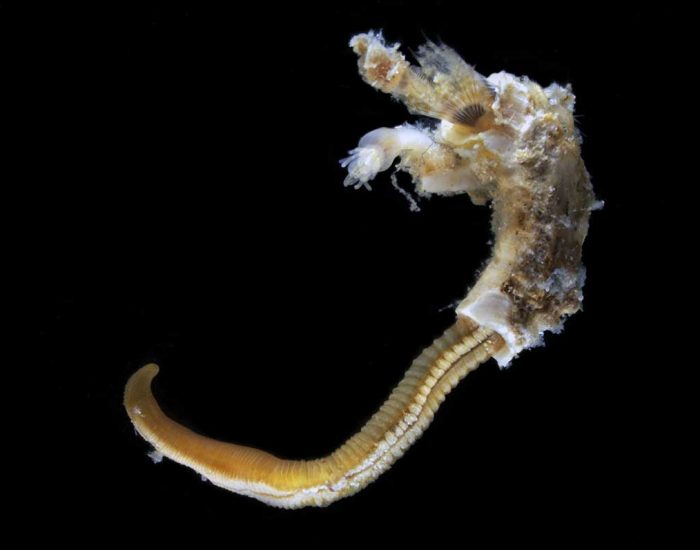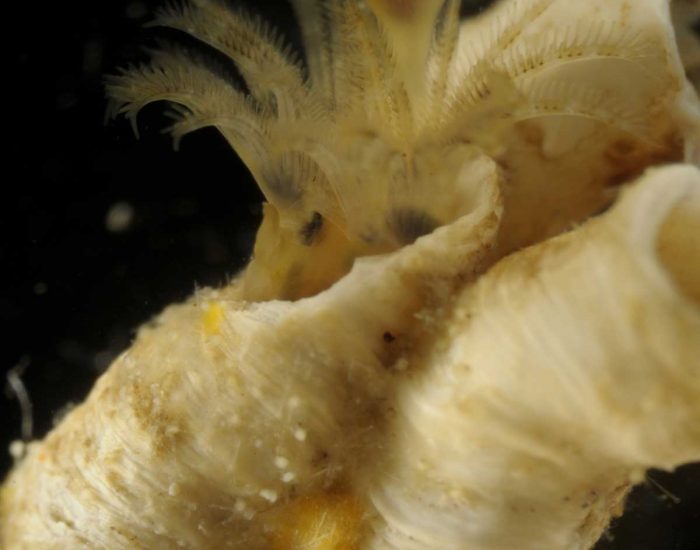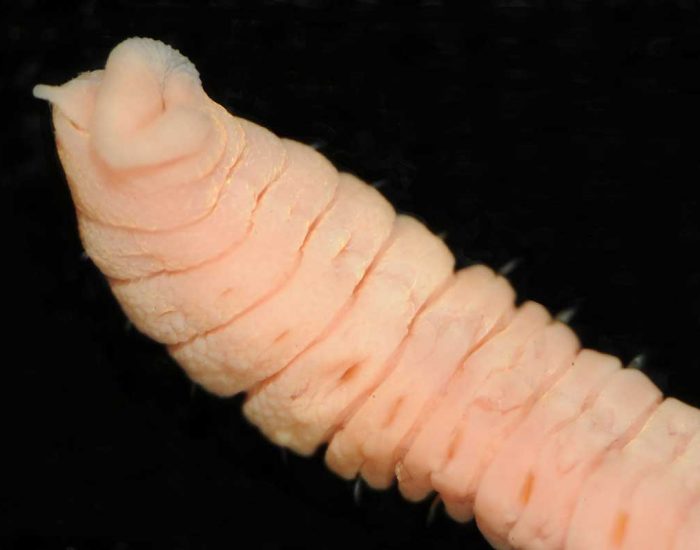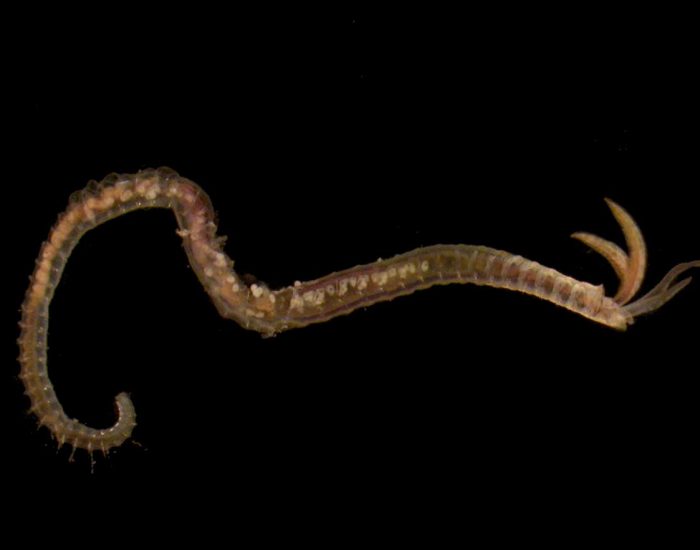Annelids
Phylum Annelida
The phylum Annelida includes earthworms, polychaete worms, oligochaetes, and leeches. Worms in this phylum are primarily characterized by having segmented bodies (some worms have more conspicuous segments than others). Except for leeches, all annelids also have hair-like projections, called setae, coming from their body. The worms we will address here are all marine annelids, and are either in the class polychaeta or oligochaeta.
Polychaeta – A polychaete is a worm that has many setae projecting off of its body (“poly” meaning many). Most segments on a polychaete have parapodia, or paddle-like feet, which are used for movement and other functions such as pumping water through burrows. The picture below is an example of parapodia on a polychaete with setae protruding coming from them.

Oligochaeta – An oligochaete is a worm that has fewer and simpler setae projecting out of the body wall. Earthworms are terrestrial oligochaetes. Estuarine oligochaetes are much smaller and generally less than a centimeter long. A high power microscope is often needed to look at the setae of an oligochaete in order to identify it.
Clam worm O
Alitta succinea
- Characteristics:
Polychaete; head has four large eyes, four pairs of tentacles, and one pair of long palps
- Range:
Atlantic and Pacific coasts of the U.S.
- Size:
Up to 1.5in (3.5cm) in length
- Habitat:
Estuaries, tidal creeks, marsh platform, sand and mud
- Fun Fact:
Worms in this family are highly preferred and sought after by shorebirds

Fan worm H
Hydroides dianthus
- Characteristics:
- Polychaete; lives in calcium carbonate tube; tentacles protrude for feeding; tube closes with an operculum
- Range:
- Atlantic coast of the U.S., south through the West Indies
- Size:
- Less than 0.5in (1cm) in length
- Habitat:
- Hard surface in estuaries, such as oyster reefs
- Fun Fact:
- Known as a fouling organism because of its ability to cover hard surfaces, especially oysters

Capitellidae D
- Characteristics:
- A polychaete family; bodies tapered at end; loosely coiled; shorter setae, need microscope to identify to species level
- Range:
- Atlantic and Pacific coasts of the U.S., the Gulf of Mexico
- Size:
- Less than 0.5in (1cm) in length
- Habitat:
- Estuarine flats, marsh platform, tidal creek bottoms
- Fun Fact:
- Will reproduce during times of environmental stress

Monopylephorus rubroniveus D
- Characteristics:
- Oligochaete; body with numerous segments similar to earthworm; red gut and white coelomocytes (cells)
- Range:
- Atlantic and Pacific coasts of the U.S.
- Size:
- Less than 0.5in (1cm) in length
- Habitat:
- Salt marsh, tidal creeks, primarily intertidal
- Fun Fact:
- Very tolerant of stress and pollution, found in areas with high levels of contaminants and hypoxia; candy cane appearance

Plumed worm C
Diopatra cuprea
- Characteristics:
- Polychaete; lives in tube with items attached to it; five antennae; body with branchiae (like gills) behind the head
- Range:
- Atlantic coast of the U.S., and the Gulf of Mexico
- Size:
- Up to 5in (12cm) in length
- Habitat:
- Mud and sand flats, primarily intertidal
- Fun Fact:
- Decorated tube (pictured above) is home for other small animals and plants which are sometimes eaten by the worm

Streblospio benedicti H
- Characteristics:
- Polychaete; head with four eyes and four tentacles; red-brown body; each segment with small parapodia
- Range:
- Atlantic and Pacific coasts of the U.S.
- Size:
- Less than 0.5in (1cm) in length
- Habitat:
- Estuaries, tidal creeks, marsh platform
- Fun Fact:
- Feeding typically happens by the tentacles sweeping the surface of the mud to capture fine particles and detritus



















